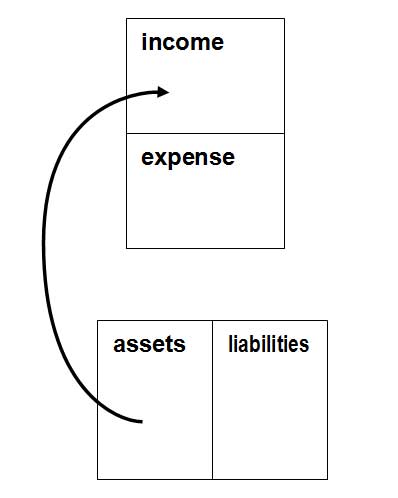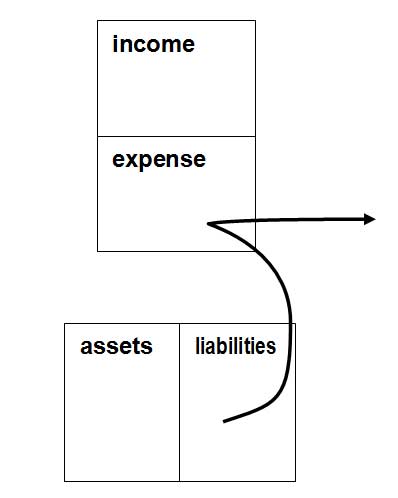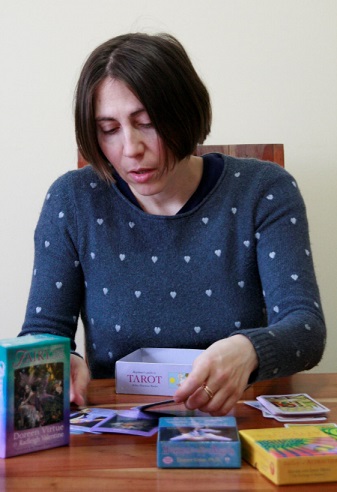
This is part 1 (of 4). Go to Part 2. Go to Part 3. Part 4.
As a self-made millionaire and a financial teacher, Robert Kiyosaki describes in simple terms some financial ‘secrets’ that rich people know, and which will help you escape the ‘rat race’, and achieve financial wealth.
Summarised by Gil Dekel, PhD. The numbers below are the pages numbers as they appear in the book (published by Time Warner Paperback, London, 2002).
page 4
The average-educated and hard-working person will go to school, then find a secured job.
5
Then make some money, obtain credit cards, marry, buy a house, have a child. Then the demand for money grows. So the couple decide that their careers are important, and will work harder. Another child arrives, and more money is needed. Harder work. The income grows, but so does the tax to pay.
This is the ‘Rat Race’ of working hard, needing more money, and then working harder for the owner of a business; for the government (by paying more taxes), and for the banks (by paying off a mortgage and credit cards).
10
The education system does not teach finance. It teaches our children to play it safe; instead of play it smart.
12
To be an employee means to pay more than the fair share of taxes that one should pay over a lifetime, with little or no promise of a pension. Most families work January to mid May for the government just to cover the taxes they need to pay.
16
Is ‘the love for money the root of all evil’ – or is it ‘the lack of money the root of all evil’?
17
‘I can’t afford it’ is a statement that stops our brain from working. ‘How can I afford it?’ Is a question that makes us think, and puts our brain at work. The most powerful computer in the world is our brain, and we can make it work for us.
18
One person says, ‘I am not rich because I have kids to support’ and another person says ‘I must be rich because I have kids to support’. One plays it safe, while the other learns to manage risks.
There is a serious mistake in people’s thinking about their own homes: our homes are not our largest investment or greatest asset, but rather a liability (because we have pay for them).
19
For some people, job protection and benefits seem more important than the job itself. One person writes an impressive cv to find a good job. The other writes a business plan so to create jobs. People shape their lives through their own thoughts.
35
The first lesson Robert learned was as a child working for his Rich Dad for a small salary. Rich Dad intentionally gave him low salary, waiting for Robert to decide he does not want to work for a small pay.
37
Life teaches us not by lecturing, but by pushing us around.
38
If you do not learn, life will keep pushing you. Some people let life push them around. Others get angry and push back. But they may push back their boss, job, or family. They do not know that it is life that pushes them to begin with. Few people welcome life messages, learn from them, and move on. Understanding this concept can make you happy and wealthy. Not understanding this concept will see you blame your job, your low pay or your boss.
40
Most people want to change other, but not themselves. It is easier to change yourself…
41
The poor work for money, the rich have money to work for them.
True learning takes energy, passion, and desire. Most people play it safe with money, and feel secured, so passion does not direct them. Fear does. So they take a secured job, and a low pay cheque.
42
Fear keeps most people working at a job. The fear of not paying their bills, or of being fired. That is the price of learning a profession and then working for money. Most people become slaves to money, then they get angry at their boss. Even if paid more, people tend to spend more so still they cannot pay the bills.
44
More money will not solve your problems. It is financial education that solves problems. The rich earn more than others, but pay less in taxes…
45
Rich Dad sent Robert back to work, this time with not pay at all. This was a lesson – not to work for money…
54
Being rich, but not handling your fears and desires, means you turned out to be a high-paid slave.
59
The rich know that money is illusion, but billions of people do not know that. Money is made up of the illusion of confidence and ignorance.
60
Most people think that money is real, and that the company and government will look after them.
Opportunities are right in front of us, but we tend not to see them when we are looking for money and security. As Robert now worked for free, he had no money to buy his favourite comic books.
61
Only then he noticed that the shopkeeper, where he worked, was tearing off the front page of some comic books. He always saw her doing that, but only now, as he was not paid (and still wanting to buy these comic books) that he had noticed that. She told him that she returns the front page of all books that are not sold to the distributor. Robert then asked the distributor if he can keep the books, and was given a permission to do so.
Without a ‘safe’ salary to buy the books, Robert now collected hundreds of them, far more than he could pay for had he a salary to buy them…
62
Not getting a secured pay cheque, Robert and his friend Mike, had to use their imagination to identify an opportunity to make money, which led to an idea to open a library of these comic books, and charge other children who wanted to read these books. Opening their own library of comic books gave them the experience of not being dependant on an employer. This small business generated money for them even when they were not physically there. Money worked for them.
65
A successful business is like a tree. You water it for years until its roots gone down deep enough for it not to be needed you any more. Then the tree provides you with its shade.
67
Money does not solve problems; intelligence does. And it is intelligence that produces money. Money with no financial intelligence is soon gone. It’s not how much money you make, but how much you keep.
69
The rich acquire assets. The poor acquire liabilities and think that they are assets.
72
The cash flow pattern of an asset:
73
The cash flow of a liability:
Asset puts money in the pocket, liability takes money out.
End of part 1 (of 4). Go to Part 2. Go to Part 3. Part 4.
3 January 2010. © Gil Dekel.



 - Reading with Natalie, book here...
- Reading with Natalie, book here...